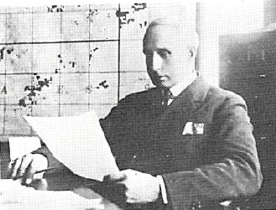My grandfather, Pasquale Galassi (Perry Galassie) at work at the Menasha Wooden Ware, date unknown
I wrote the following essay which appeared in Good Old Days magazine in 2005. When I reread this, I think of the many history books which detail how Menasha's founding fathers set foot into a virgin wilderness and felled trees and constructed dams and made a settlement out of a woods, setting the course for generations to come.
---------------------------------------------------------------------------------------------------------------------------
Great
American heroes have been celebrated in print for years- tales of the old
West, of our country’s fight for freedom, of brother pitted against brother.
Often neglected, however, are the stories of the common man, particularly
those brave souls who scrimped, saved and, swallowing hard, boarded a ship
to come to this country. Sometimes with family, but all too often alone, they set
sail for a new land, to a new future, to a new destiny. This is one such
story, of a young Italian immigrant who did just that. He was my grandfather.
Pasquale
Galassi grew up in a rocky, mountainous region of Italy known as Abruzzi.
On the map, it is only 60 miles east of Rome, but the harsh reality is worlds
away from the continental charms of the one time seat of the Roman Empire.
As a boy, Pasquale tended sheep and herded goats and hogs. He also sold
vegetables to help out the family, especially after his father, the local sheriff,
died after a fall from his horse. In summers, he worked as a guide for the
tourists who would make the journey from Rome, taking them from town to town within
his home province of L’Aquila.
Southern
Italy was a poor region in the early 20th century and opportunities
were limited. With only the equivalent of an eighth grade education,
Pasquale set his sights on joining his older brother Francesco in America.
Francesco’s letters described the new opportunities and life style which
awaited his younger brother. Maybe if they saved long enough, they’d even be able
to send for their mother and siblings! With $40 in his pocket and a determination
to make a better life for himself, he set sail from Naples aboard the SS
San Giorgio, on April 13, 1910. Arriving 15 days later in New York, he processed
through Ellis Island, the first stop for thousands and thousands of immigrants.
Then, continuing his journey, he took a train to upstate New York, entering
Canada through Niagara Falls and reentering the United States at Port Huron,
Michigan. Pasquale eventually joined his brother in Eveleth, Minnesota, where
iron ore mining was the chief industry. He became a water boy in the mines, a
dangerous job too, though one deemed fit enough for a young, inexperienced
immigrant. Pasquale had limited English skills but a determination
to make something of himself in his new land. He wasted little time.
Within
ten years, my grandfather had met my grandmother, fathered three children,
and had settled in northeastern Wisconsin. And as for the rest of his life?
No, he didn’t become a great statesman or a renowned industrialist. He didn’t
invent the light bulb, or write the great American novel. Instead, he built
furniture, barrels, and wooden toys in a factory. He refinished and upholstered
furniture. He raised chickens and grew grapes. He gained his citizenship.
He saw his mother, brother and sister come to the United States and
begin their lives anew. He became my grandfather.
It is
almost unthinkable to envision such an adventure today. In this age of
instant communication and fast travel, the sacrifices my grandfather had to endure
to come here and the uncertainty he must have wrestled with boggle the mind.
And to do it at age 16! To board a ship for a strange land, never knowing
how well things will turn out, not knowing if you will ever see your family
again, had to be one of the hardest things he ever did. To have just a small
amount of the courage it took to do that…just think what we could
accomplish!
So much
has been written about the people who made this country great, but by
and large they are the big names- the Gettys, the Astors, the Rockefellers,
the Kennedys. Americans do themselves
a great disservice by not
learning more about the sacrifices of people like my grandfather and their
own ancestors.
This brief
glimpse into Grandpa’s life is only the tiniest piece of the rich tapestry
of life and achievement woven by these heroic immigrants. Compared to a world
today where “heroes” are declared by virtue of their accomplishments on a
basketball court or a recording studio, they were true heroes. Their faith, bravery,
and determination to succeed in their new country laid the foundation for the
good life many of us now lead. Without men like my grandfather, I would not be
here today and this great land of ours might be very different. But he took the
risk, to give himself and his ancestors a better life. Thanks, Grandpa.

















.jpg)












